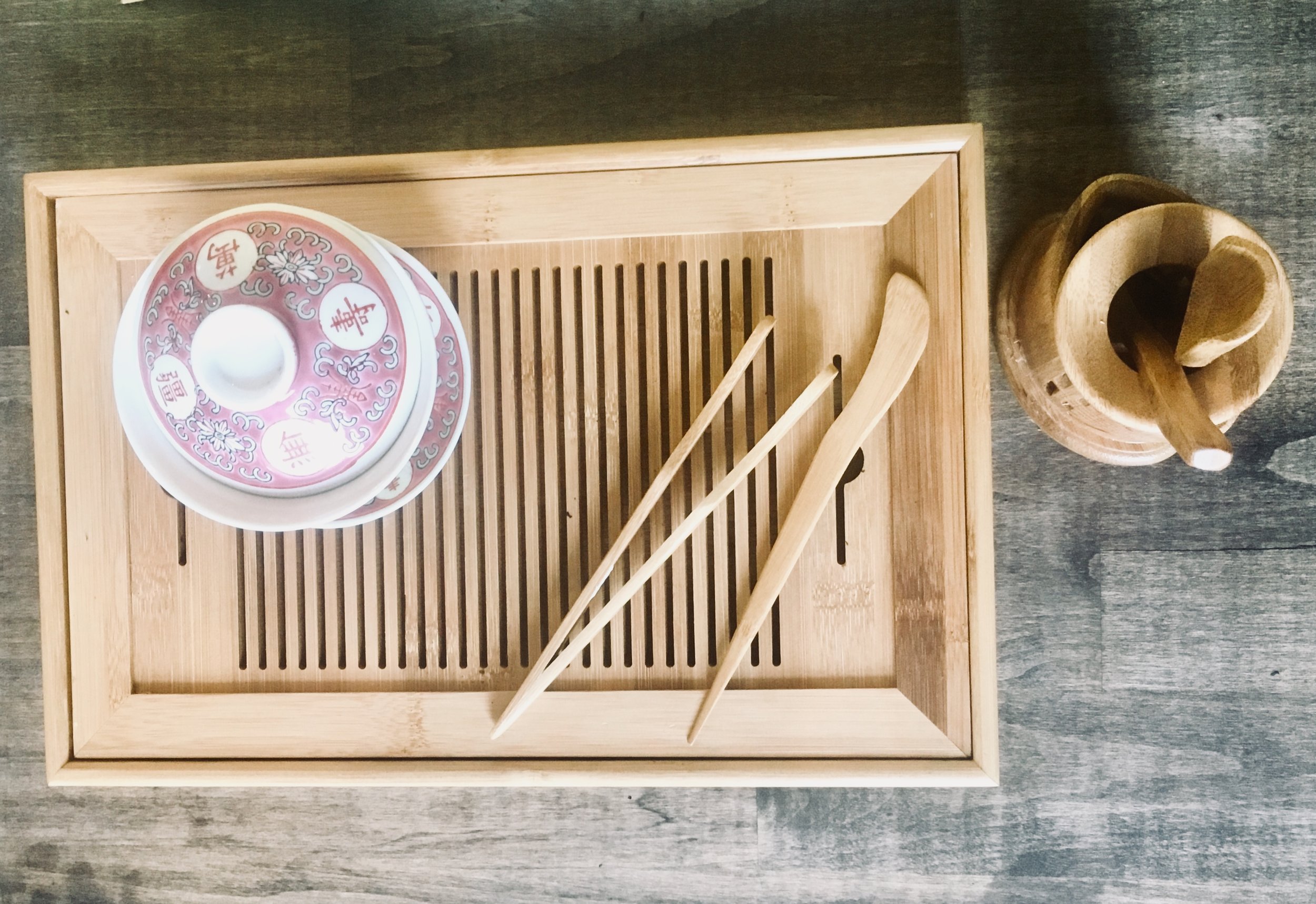Pu'erh Tea
The Origins of Pu’erh
Today, Pu’erh is a staple and revered tea all over the world, but the creation of this highly sought after tea was a sort of fluke. Pu’erh’s accidental existence emerged during the Tang Dynasty (618-907 A.D.). China’s tea market was proudly thriving, and subsequently tea merchants were struggling to transport tea over long treacherous journeys, some that stretched as long as a month! In an attempt to relieve some of their struggles, tea merchants began packaging teas in a brick form. This made the tea more compact and would improve overall production efficiency. Off the teas would go, making their perilous journey to Yunnan, where they would be transported all over the world. Unexpectedly, the tightly compounded tea would begin to ferment during the trip! The fermentation process would change the tea’s color from green to dark and the flavor would become richer and more complex. The merchants had accidently created a new tea that would rival Oolong and Jasmine tea. They named this tea after the town of Pu’erh, which is located in central Yunnan.
Realizing their wonderful mistake, Chinese tea experts began perfecting the art of creating Pu’erh. Overtime, tea experts discovered that Pu’erh’s earthy flavor was acquired due to slow oxidation and the assistance of fungal, bacterial, or autooxidation influences. This involvement created a new taste that was profoundly different from other teas such as green, oolong, or black tea. Subsequently, the flavor of Pu’erh can dramatically change over the course of the aging process, without losing it’s earthy yet sweet quality.
Types of Pu’erh
Pu’erh comes in two distinct types: raw or cooked/ripe, also known as Sheng Pu’erh or Shou Pu’erh respectively. Raw pu’erh leaves are withered then heaped into piles to ferment. This process is referred to as “Wo Dui” and is responsible for taste development. The leaves are then pan fried to halt enzyme activity and are left to dry in dry storage with natural humidity to slowly oxidize over time.
Cooked or Ripe pu’erh (Shou Pu’erh) was developed in 1973 by the Kunming Tea Factory in an effort to speed up the fermentation process. The tea leaves are picked and withered then mixed with a bacterial culture designed to mimic the bacteria that would be created during natural fermentation. Then, the pu’erh is left to oxidize for over a month in a hot/humid environment before firing. Cooked pu’erh can be characterized as robust, earthy flavor and aroma, dark, and rich liquor.
Pu’erh Health Benefits
If you’re looking to boost your daily health, look no further. From cancer to weight loss, Pu’erh seems to be the best tea for an overall health enhancement.
For starters, Pu-erh is noted to lower cholesterol. Dr. Andrew Weil mentioned that “A Chinese study performed on rats and published in 2009 showed lowering of LDL (“bad”) cholesterol and triglyceride levels after the animals were fed a pu-erh tea extract, along with an increase in HDL (“good” cholesterol).” Similar to most teas, Pu’erh can also help improve your overall cardiovascular health.
Pu’erh is also rich in antioxidants and antibacterials. This means that Pu’erh will improve your overall health by killing free radicals and harmful bacteria in your body. Drinking a cup of Pu’erh everyday is an easy and tasty way to rid your body of a few toxins.
Pu’erh is also well-known for containing high amounts of caffeine, though most don’t report many side effects until after five cups. Subsequently pu’erh can produce increased alertness and mental clarity.
*We are not doctors at Cup and Kettle. All health information should be retrieved from medical professionals.
Pu’erh Brewing Techniques
Preparing pu’erh is extremely similar to preparing an oolong or black tea, and it’s fairly simple! You can also reuse good quality tea leaves several times after their first brew!







